Ever wondered what toys do cats enjoy most? Is it the classic cat wand, the irresistible crinkle ball, or something you’ve never even heard of? If your feline friend seems bored or you just want to see those lovable zoomies, you’re in the right place. This guide will help you uncover which cat toys truly spark joy—and offer expert insights to keep your kitty both healthy and happy.
Curious About What Toys Do Cats Enjoy Most? Discover the Top Cat Toy Choices
- Cat toys are as varied as your feline’s personality—find out which spark the most joy (and zoomies!) in cats of all ages.
With so many cat toys available—ranging from high-tech gadgets to simple plush toys—choosing the best can be overwhelming for any cat owner. Every cat is different, but there are clear favorites that most felines gravitate toward. Whether you nurture an exceptionally playful kitten or a wise old indoor cat, certain toys routinely encourage active play, provide crucial mental stimulation, and strengthen that precious human-cat bond.
Perhaps you’ve tried a cat wand, only to find your cat ignoring it for crinkle balls. Maybe your furry friend is entranced by anything filled with catnip, or perhaps they can’t resist the hunt for a red laser dot. The key is understanding your cat’s personality and trying a variety of cat toys —from interactive puzzle toys to classic feather teasers—to discover what truly delights them. Let’s jump into our top recommendations and expert advice.
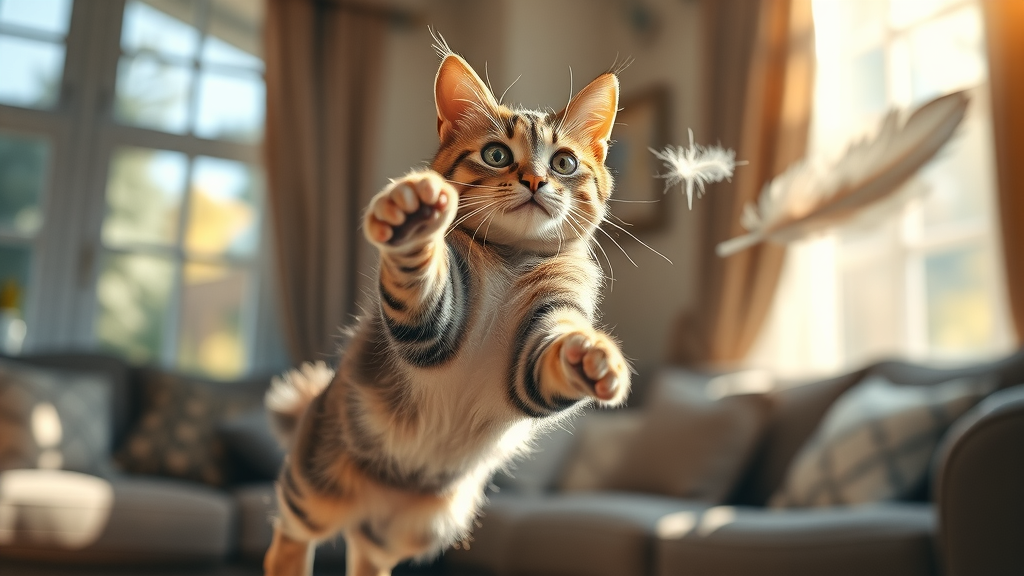
The Ultimate List: What Toys Do Cats Enjoy Most? Our Top 10 Cat Toy Picks
- Interactive Puzzle Toy : Stimulate and entertain your cat
- Catnip Toys : Irresistible fun for all cats
- Cat Wand : Ignite the hunter instinct
- Feather Teasers : Mimic prey movement
- Crinkle Balls : Simple, crinkly, and oh-so-fun
- Laser Pointers : Engage in energetic, interactive play
- Automatic Cat Toys : Play even when you’re not home
- Tunnel Toys : Perfect for indoor cats who crave adventure
- Plush Cat Toys : Soft companions for gentle play
- Treat-Dispensing Toys : Combine playtime with snacking
Every types of toys in this list meets unique feline needs. Interactive puzzle toys sharpen brains, while catnip toys stir up irresistible delight. Cat wands and feather teasers channel the natural hunting instinct, and crinkle balls add auditory excitement to play sessions. Laser pointers provide boundless energy outlets; automatic toys are wonderful for keeping your cat entertained solo. Tunnels and plush toys cater to comfort and exploration, while treat-dispensing gadgets provide rewards and fun in one. A truly satisfied feline likely has a few from each category!
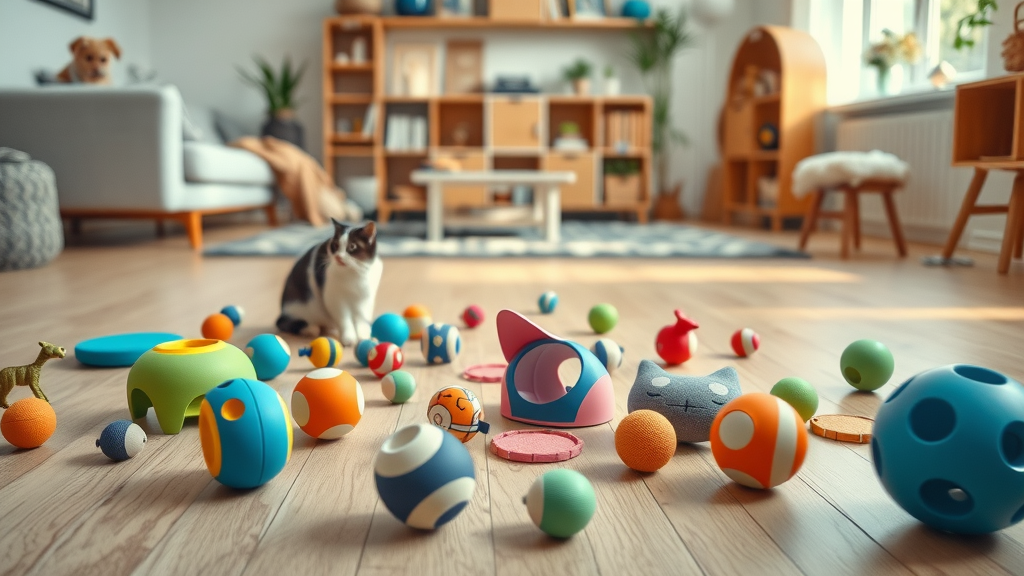
Why Cat Toys Are Essential for Cat Health and Happiness
- Cat toys promote physical exercise for both indoor and outdoor cats
- Mental stimulation reduces destructive behaviors
- Strengthening the human-cat bond through interactive play
The right cat toy isn’t just about play—it's a powerful tool in enriching your cat’s life. For indoor cats, the absence of real hunting opportunities can lead to boredom and sometimes mischief, like scratching furniture or overeating. Active toys such as a wand toy or puzzle toy encourage movement and keep those feline muscles trim, supporting lifelong health and agility.
Beyond the physical, interactive toys tackle the need for mental stimulation. A cat puzzle toy makes your kitty think and strategize, keeping their mind sharp and reducing destructive behaviors born from boredom. Also, play sessions with engaging toys deepen the human-cat connection. That time spent together not only creates fond memories—it helps both pet parent and feline destress and bond.
Integrating a variety of cat toys —from plush stuffed toys for cuddling to active wands and treat-dispensing toys—ensures your cat stays healthy, happy, and entertained throughout different life stages. A happy cat is a playful, well-exercised, and mentally content companion!
What Makes a Cat Toy Irresistible? Insights Into What Toys Do Cats Enjoy Most
- Sensory appeal: colors, textures, movement
- Sound: Bells, crinkles, rustling
- Catnip infusions and why catnip toys have universal appeal
Several factors make a cat toy irresistible. The best toys engage multiple senses—colors or patterns that catch a cat’s eye, feathers or fuzz that feel enticing, and unpredictable movement that mimics the unpredictability of prey. Many cats love toys that wiggle, flutter, or dangle, especially those with bells, crinkles, or rustling sounds.
Scent is another powerful attractant, especially in catnip toys . Catnip, a herb in the mint family, triggers a burst of playful energy—or blissful relaxation—for most cats. That’s why catnip-infused plush toys are almost always a hit. The combination of a stimulating or comfort-giving texture, appealing sound, and enticing smell is the secret to a toy cats love and return to again and again.
Interactive Cat Toys: The Cat Wand, Puzzle Toy, and More
- The cat wand: Engaging cats in play and exercise
- Interactive puzzle toy: Sharpening feline minds, reducing boredom
- Benefits for kittens and senior cats alike
Among the most beloved cat toys are interactive toys such as the classic cat wand and clever puzzle toys . These toys not only entertain your cat—they deliver both physical and mental stimulation needed for well-being. The cat wand, usually featuring feathers, string, or soft attachments, channels the predatory hunt. Chasing, leaping, and pouncing allow cats to exercise their bodies while expressing their natural instincts.
Similarly, puzzle toys challenge your cat’s mind by requiring them to solve a problem—such as rolling a ball to release a treat. This not only keeps their brains sharp but can slow down fast eaters when used as a food puzzle, encouraging healthy habits. Interactive toys benefit kittens by developing coordination and confidence, while older cats enjoy gentle stimulation without overexertion.
What truly sets these toys apart is the engagement they foster. Both puzzle toys and wand toys invite the cat owner to participate in play, deepening the bond and making daily life rich with positive interactions. Plus, these diverse options mean there’s always something new to try for cats who get bored quickly.
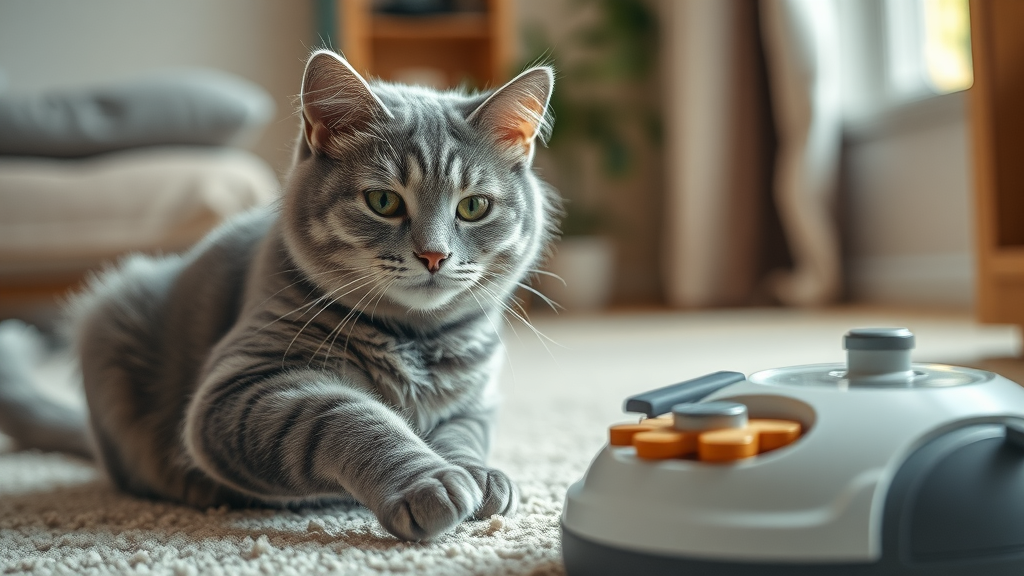
Catnip Toys and Catnip Toy Favorites: Why Cats Love These Classics
- The science of catnip and how it affects cats
- Best-selling catnip toys and how to choose the right one
Catnip toys are legendary in the feline world, and for good reason. Catnip contains nepetalactone, a compound that activates happy receptors in the brains of about 70% of adult cats. The effect? Sudden bursts of playful energy, rolling, rubbing, and purring—or blissful relaxation, depending on your cat. Kicker toys filled with catnip encourage full-body rolling and "bunny kicking," while plush toys offer a soft, comforting texture combined with irresistible scent.
With countless catnip toys to choose from, pay attention to the filling (100% dried organic catnip is best) and the durability of the toy fabric. Yeowww! makes famously potent banana toys, and brands like Kong and Petstages deliver long-lasting, safe plush toys for both kittens and adults. Look for toys with sturdy seams and those easy to refresh with a sprinkle of fresh catnip. Supervision is recommended, just to prevent over-enthusiastic chewers from tearing open their treat!
Indoor Cats vs. Outdoor Cats: Are the Best Cat Toys Different?
- Specialized cat toys for indoor cats (tunnels, scratching posts, and more)
- Toys that satisfy a cat’s outdoor instincts in a safe, indoor setting
Indoor cats rely even more on toys for exercise and mental stimulation. Tunnels, multi-level scratching posts, dangling wand toys, and climbing trees cater specifically to their need for adventure in a limited space. These allow your indoor cat to satisfy climbing, pouncing, and stalking instincts that help maintain a healthy weight and positive behaviors.
For cats with outdoor experience or strong hunting instincts, mimic the thrill of the hunt indoors with toys that dangle or move unpredictably—like feather teasers, plush mice, or laser pointers. These cat toys awaken prey-chasing instincts safely, keeping cats stimulated and less likely to express frustration on your furniture or other belongings.
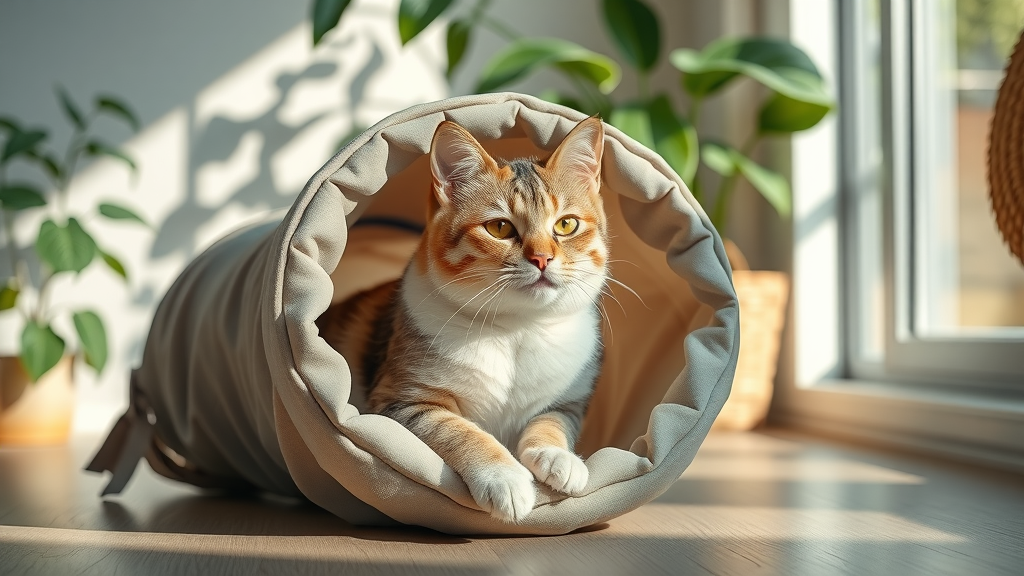
Automatic and Electronic Cat Toys: Keeping Your Cat Entertained While You’re Away
- Features to look for in automatic cat toys
- Laser cat toys and self-moving gadgets: Pros and cons
The modern cat owner may not always be at home to wave a wand toy for hours. That’s where automatic cat toys and electronic gadgets come in! Robotic mice, self-moving balls, and interactive lasers can keep your cat busy (and out of trouble) while you’re working or running errands. Look for features like unpredictable movement patterns, changeable speeds, and automatic shut-off timers to keep play sessions healthy and stimulating.
Laser cat toys offer exciting visual play for even the laziest cats, but always ensure the play session ends with a tangible toy or treat—the “catch”—to prevent frustration. Electronic toys are best for supplementing interactive sessions rather than fully replacing them. Rotate these with manual toys for optimal engagement and well-rounded playtime.
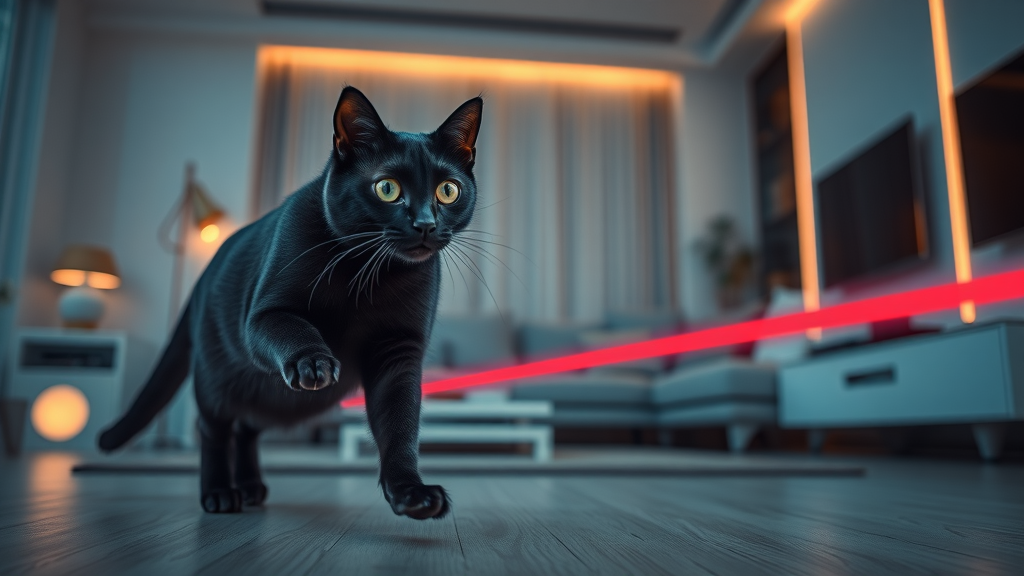
Table: Comparing the Top Cat Toys for What Toys Do Cats Enjoy Most
| Toy Type | Sensory Features | Best For | Average Price | Customer Rating |
|---|---|---|---|---|
| Interactive Puzzle Toy | Multi-sensory, challenge | Curious, clever cats | $15 | 4.7⭐ |
| Catnip Toys | Scented, plush | All ages | $7 | 4.5⭐ |
| Cat Wand | Feathery, flexible | Energetic play | $10 | 4.6⭐ |
| Laser Pointer | Visual chase | Active cats | $12 | 4.2⭐ |
| Automatic Toys | Movement, unpredictability | Busy owners | $30 | 4.4⭐ |
Expert Insights: Quotes on What Toys Do Cats Enjoy Most
"A well-selected cat toy can dramatically boost your feline's happiness and health, especially for indoor cats." — Dr. Emily Wu, Feline Behaviorist
"Interactive toys like a puzzle toy or cat wand are not just fun—they’re essential for your cat’s natural instincts and well-being." — Sarah Kim, Cat Enrichment Specialist
- Watch playful cats test the latest interactive puzzle toy, catnip toys, and classic cat wands for their immediate reactions and favorites.
[Video compilation: Curious kittens and adult cats interact with various top-rated cat toys in bright, homey spaces. Watch how each toy—puzzle toys, feather wands, and plush catnip toys—lights up different feline personalities!]
- Feline experts introduce various types of cat toys, including automatic and interactive options, to determine what toys cats adore most.
How to Select the Best Cat Toy for Your Furry Friend
- Consider your cat’s age, activity level, and play preferences
- Material safety and durability checks
- Rotating toys to keep cats interested (best toys for cats that get bored easily)
The quest for the ideal cat toy starts by observing your cat’s unique personality and habits. Is your feline a high-energy kitten that loves to leap, or a dignified senior who prefers gentle batting? Wand toys and interactive teaser games are fantastic for kittens and active play, while older cats may cherish plush toys or slow-paced puzzle toys. For all ages, make sure toys are sized appropriately—kittens may struggle with larger kicker toys, and small parts should be avoided.
Safety is non-negotiable. Always check for non-toxic materials, durable stitching, and securely-attached decorations. Avoid toys with loose threads, stuffing, or bits that can be swallowed. Lastly, rotate a mix of puzzle toys, cat wands, and sensory catnip toys each week. This prevents boredom and keeps discovery and excitement high for your feline friend.
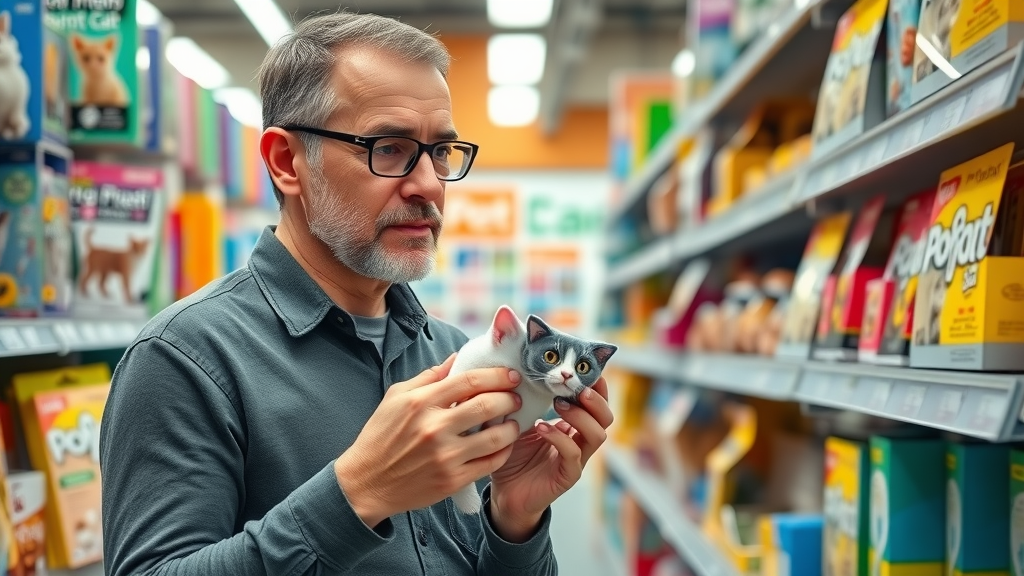
Safety First: Ensuring Cat Toy Fun Without Risk
- Size, construction, and non-toxic materials
- Supervision recommendations for small or detachable parts
- Regular checks for wear and tear
While most cat toys are designed for feline fun, not all are created equal when it comes to safety. Always select toys that are the right size for your cat’s mouth—avoiding small balls or bells that could be choking hazards. Durable construction helps prevent stuffing, squeakers, or beads from spilling out, especially with enthusiastic chewers or kittens.
If a toy contains detachable parts, such as feathers, eyes, or strings, supervision is especially important. Routinely inspect all toys, discarding any that are frayed, torn, or losing pieces. A quick safety check is the best way to guarantee that active play always ends happily for your furry friend!
- Creative ideas to make effective, safe, and affordable cat toys at home with everyday objects.
[Video explainer: Discover how to turn household goods like cardboard boxes, old T-shirts, and even toilet paper tubes into delightful, safe, and sustainable cat toys. Engage your indoor cat with budget-friendly, eco-conscious fun!]
People Also Ask: What Toy Do Cats Love Most?
- Studies show most cats gravitate toward toys that mimic prey, such as feathered cat wands and interactive puzzle toys. Catnip toys are also a frequent favorite.
Feathered wand toys , interactive puzzle toys , and catnip toys rank highest among toys cats love most. These playthings tap into the essential instincts of chasing, batting, and "catching," providing both physical and mental benefits. When in doubt, always try a variety to see what your curious cat enjoys!
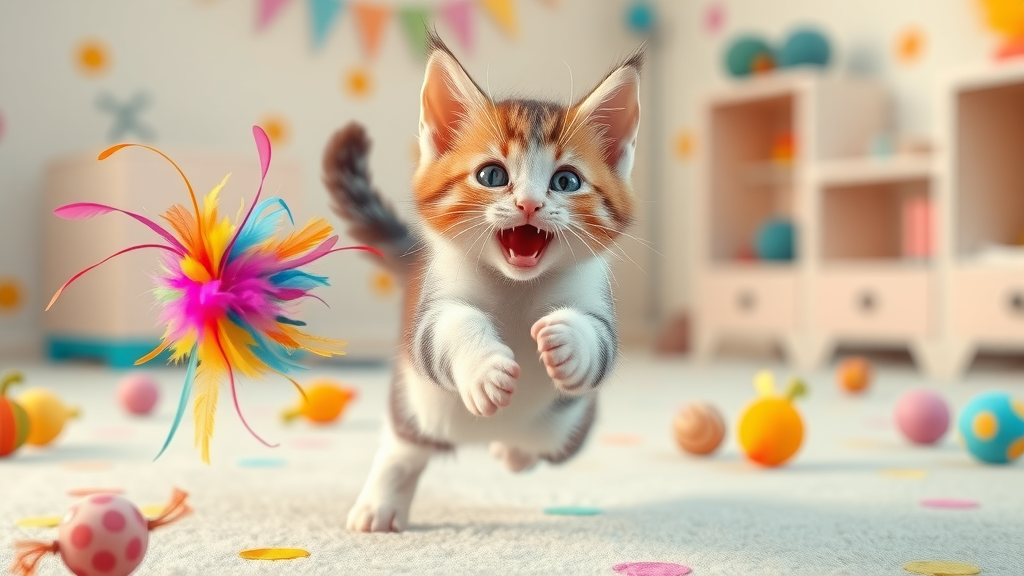
People Also Ask: What Do Cats Enjoy Playing With the Most?
- Cats most enjoy toys that engage their senses and hunting instincts: wand toys, crinkle balls, and puzzle toys top the list. Rotating toys frequently helps maintain excitement.
Cats are natural hunters, and the toys they enjoy most reflect these instincts. Wand toys mimic birds and bugs; crinkle balls offer irresistible noise and movement, and puzzle toys provide mental stimulation. Frequently changing up which toys are available keeps cats intrigued and maximizes engagement.
People Also Ask: What Toys Will Cats Not Get Bored Of?
- Toys that change or offer varying challenges—like puzzle toys, interactive cat wands, and automatic moving toys—keep cats interested longer and reduce boredom.
Variety is the secret to long-term feline interest. Puzzle toys with different solutions, automatic toys that move unpredictably, and interactive cat wands offer fresh challenges each day. Rotating toys and mixing up textures, sounds, and play styles keeps even the cleverest cats engaged.
People Also Ask: What Toys Attract Cats?
- Toys that dangle, flutter, or mimic prey movement—especially those enhanced by catnip—attract cats for both solo and interactive play.
Cats are drawn to toys that replicate the erratic motion of small prey. Dangling feathers, fluttery ribbons, and plush mice engage a cat’s hunting drive. Catnip-infused toys offer an extra attraction, ensuring solo play when you’re busy and interactive fun during bonding time.
Quick Buying Guide Recap: What Toys Do Cats Enjoy Most?
- Choose variety: Rotate between puzzle toys, catnip toys, and cat wands
- Cater to your cat’s unique personality and age
- Factor in material, durability, and safety
To summarize your shopping journey, mix it up with interactive toys and solo-play options, observe what excites your cat, select safe and long-lasting materials, and switch toys out regularly. This ensures play remains a highlight of your cat’s day!
Popular Cat Toy Brands and Where to Buy
- Highlighting reliable brands for cat toys: Kong, Petstages, Yeowww!, Frisco, Catit
- Outlets: Pet stores, online retailers, and specialty cat shops
For cat toys you can trust, turn to brands like Kong, known for durable and safe toys, or Yeowww! for potent catnip devices. Catit and Frisco offer innovative options for puzzle and activity toys. Purchase from pet specialty shops, big-box stores, or trusted online platforms to explore the widest choice and read reviews from fellow cat owners.
For Indoor Cats: Best Cat Toys to Keep Them Happy and Active
- Top recommendations for indoor cat enrichment: tunnels, puzzle toys, electronic cat wands, and treat-dispensing gadgets
Life indoors doesn’t have to mean boredom for your cat. Offer tunnel toys for hide-and-seek, puzzle feeders to challenge minds, and electronic wands to keep them on their toes. Treat-dispensing toys reward effort and prevent overeating boredom. Rotate these to keep excitement fresh and ensure your indoor cat stays fit and content.
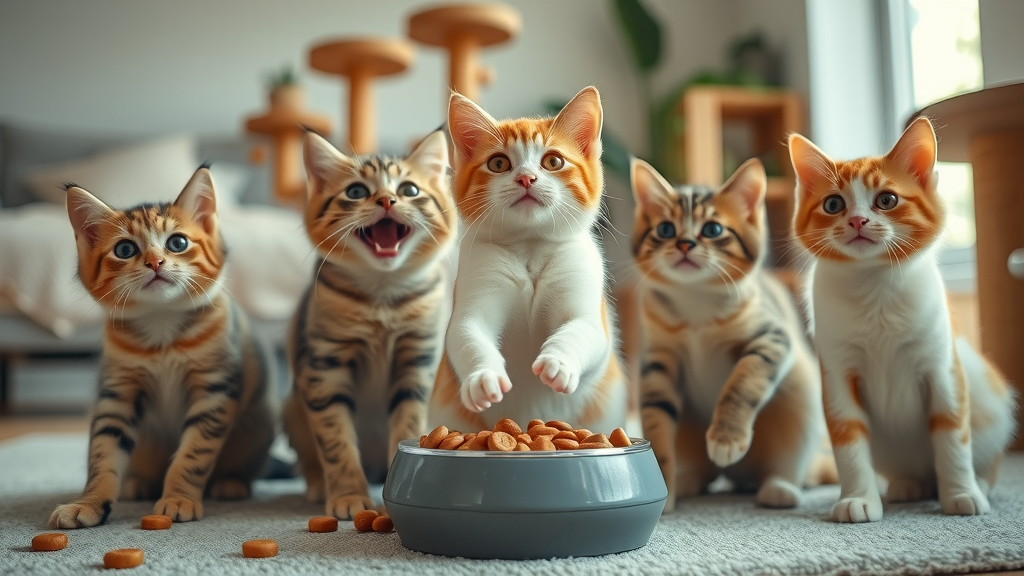
Tips for Cleaning and Maintaining What Toys Do Cats Enjoy Most
- Cleaning routines for fabric and plastic toys
- How often to replace worn-out toys
Keep cat toys safe with a regular cleaning routine. Fabric and plush toys can be hand-washed with mild detergent and dried thoroughly, while plastic toys can be soaked in a solution of water and vinegar. Replace toys showing excessive wear—frayed fabric, loose stuffing, or missing parts—to prevent accidents and maintain maximum enjoyment.
The Environmental Impact: Eco-Friendly Cat Toys
- How to find sustainable, natural-material cat toys
- Brands that offer eco-conscious choices
Eco-friendly cat toys are a win for both your feline and the planet. Look for brands producing toys from natural fibers like wool, hemp, or untreated cotton. Companies like Honest Pet Products and Beco Pets offer eco-conscious alternatives, using recycled or biodegradable materials for their toy lineups. Going green benefits your cat, your home, and the world.
Frequently Asked Questions About What Toys Do Cats Enjoy Most
-
Q: Is it safe to give my cat homemade toys?
A: Yes, if supervised and made from non-toxic, sturdy materials. Always avoid small or detachable parts that could be swallowed, and monitor for signs of wear. -
Q: How often should I change my cat’s toys?
A: Rotate toys weekly to maintain interest and excitement. Remove damaged or worn toys promptly for your cat’s safety. -
Q: Are electronic toys suitable for kittens?
A: Some devices are; always choose age and size-appropriate options. Supervise kittens when trying new interactive gadgets for the first time.
Key Points to Remember When Asking What Toys Do Cats Enjoy Most
- Variety and interactivity are key
- Catnip and puzzle toys are almost always a win
- Engage often, rotate toys, and always ensure safety
Giving your cat a stimulating, active environment is as simple as finding the right cat toys , changing them often, and joining in on the fun.
Choosing What Toys Do Cats Enjoy Most? Your Feline’s Happiness Awaits
- Finding the perfect cat toy is a journey—observe your cat’s preferences and provide new challenges to nurture their curiosity and well-being.
Let the quest for feline joy inspire your next shopping trip or craft session. By tuning in to your cat’s favorite activities, you’ll make every day richer, healthier, and more playful for your beloved pet.
Get the Cat Toy Scoop—Stay Ahead With Monthly Tips for Happy Cats
- Caring for your pet just got easier. Get expert advice, product tips, and pet wellness updates delivered monthly. 🐾 Sign up today and stay one paw ahead.
To further enhance your understanding of the toys that cats enjoy most, consider exploring the following resources:
-
“The 12 Best Cat Toys to Keep Your Kitty Entertained” offers a comprehensive review of top-rated cat toys, including interactive puzzle toys and catnip-infused options, to help you select the perfect plaything for your feline friend. ( businessinsider.com )
-
“Best Cat Toys to Keep Your Feline Friends Entertained for Hours” provides insights into various engaging toys, such as the Petstages Tower of Tracks and the PetFusion Ultimate Cat Scratcher Lounge, designed to stimulate your cat’s natural instincts and keep them active. ( brazetools.com )
These articles delve into the features and benefits of various cat toys, assisting you in making informed choices to keep your cat entertained and healthy.
 Add Row
Add Row  Add
Add 




Write A Comment